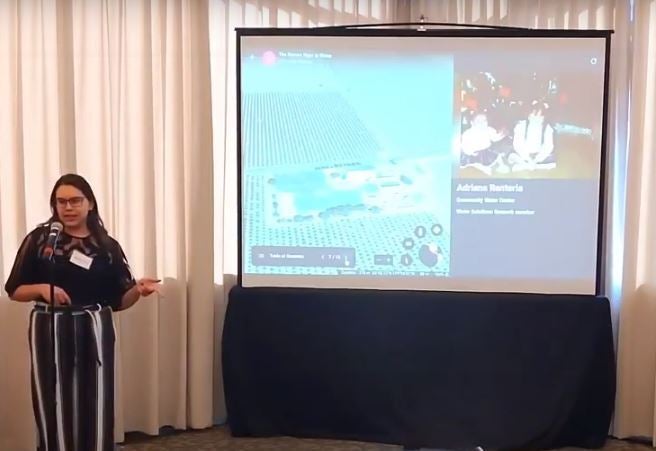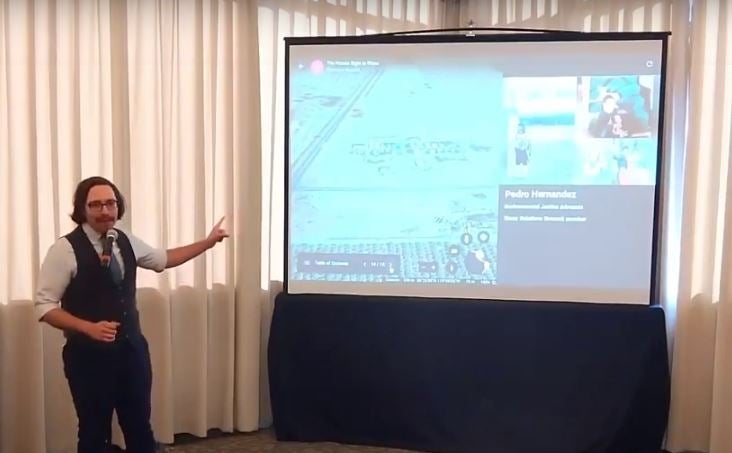World Water Day is a time to come together as a global community to reflect on the importance of water and its value to people and ecosystems — to celebrate collective victories advancing water stewardship and to draw attention to the change still needed.
Nearly 1 million people lack access to clean, safe and affordable drinking water in my home state of California — and more than 2 billion worldwide. Each number represents a person: a mother, a father, a child, a loved one. These numbers must change.
I have worked on water issues almost every day for more than a decade, but it wasn’t until I participated in the eight-month Water Solutions Network leadership program in 2019 that I gained a deeper understanding of why so many Californians still lack this fundamental right. As we mark #WorldWaterDay, here’s a look at California’s progress on its Human Right to Water Law and two personal stories from water leaders on challenges and solutions. Share on X
I gained this understanding from the powerful personal stories shared by the diverse group of 24 water professionals in my cohort. We were tasked with developing recommendations for implementing California’s 2012 Human Right to Water law.
To mark World Water Day, it seems fitting to reflect on California’s progress on some of our recommendations and share two stories that highlight why they are important.
Increase community input
Our cohort wove our stories and recommendations together in a Google Earth map (open link in Google Chrome browser).
In her story “What is my role?,” my Water Solutions Network colleague Adriana Renteria, now director of the State Water Resources Control Board Office of Public Participation, recalled some questions she asked as a child while visiting her uncle in an unincorporated part of Kern County: “Why does my uncle’s toilet and shower sometimes run out of water? And why does my tía (aunt) use big jugs of water to cook when my mom uses water from the sink?”
The answer that Adriana received: “That’s just the way that things are.”

Adriana Renteria, director of the State Water Resources Control Board Office of Public Participation, tells her personal water story as part of a Water Solutions Network presentation to leaders across the state at a meeting in Sacramento. The stories and recommendations on implementing California’s Human Right to Water law were woven together on a Google Earth story map. (Open link in Google Chrome browser).
Uncomfortable with this answer, Adriana is now helping to make water decision-making more inclusive of underrepresented voices. While there are still challenges, including the digital divide, she is working on practical solutions.
For instance, instead of relying on Zoom meetings during the COVID-19 pandemic, staff from her office are talking with community members by phone. For meetings, they offer two call-in phone numbers, one in English and one in Spanish. And they work with a local water system to print out presentations in advance of some meetings for residents without Internet access.
Adriana has applied these community engagement strategies in her work helping the state consolidate small water districts, which is one important solution to provide clean and affordable drinking water to more Californians.
Facilitate consolidation of water districts
California is on track to consolidating water districts, but the path can be bumpy, as another Water Solutions Network colleague, Pedro Hernandez, has experienced firsthand.
In his story “A look to the past, a look to the future,” Pedro shares his experience growing up in a small mobile home park with arsenic-contaminated drinking water. Pedro’s father had a kidney disease that required him to stay hydrated — but his father couldn’t drink the water from their kitchen faucet.
“I was scared as hell because I didn’t want my father to become a victim of this, or my mother or my dog,” recalled Pedro, who now works at Audubon California leading efforts to establish the human right to nature in the Legislature.

Pedro Hernandez of Audubon California shares his story growing up in a mobile home with arsenic-contaminated water in his Water Solutions Network presentation in Sacramento to state leaders.
More recently, Pedro helped the two-street, largely Spanish-speaking community of Tooleville, where water has been contaminated since at least the 1970s, get annexed by a larger town with a proper municipal water system one mile away. That effort was featured in a documentary “The Great Divide,” which won third place in the Yale Environment 360 Video Contest.
“Many communities like Tooleville exist because there were restrictive rental covenants that prevented people of color from living within city boundaries,” Pedro notes in the film.
In California, about 90% of federal drinking water violations occur in small communities, which lack the economies of scale of larger water districts that can spread costs of new equipment to treat contamination among many more customers.
Last year, Tooleville’s annexation was rejected by the neighboring city council, even though the state would fund the transition, and residents are now petitioning the state to mandate it.
Fund the Human Right to Water long term
Long-term funding remains one of the biggest challenges to fulfilling the Human Right to Water law.
In 2019, the Safe and Affordable Drinking Fund was passed — a major accomplishment driven by grassroots environmental justice groups. But the $130 million in additional annual funding still falls short of what’s needed.
While much works still remains, education and awareness are critical to making the Human Right to Water a reality for all Californians. I’m grateful to the Water Solutions Network and my cohort members for sharing their stories— for opening my eyes — and continuing to be agents of change.









